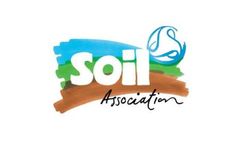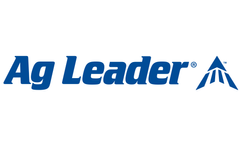Cropland Articles & Analysis
53 articles found
For instance, nearly the entire state of Iowa falls in one PULA. There are almost no acres of cropland that do not fall into one of the generalist areas—even if that acre is not in a PULA. ...
Owners: Doug, Kim & Olin Claassen Potwin, Kansas, USA Farm’s Features: 1,400 sows farm, 4 week batch farrowing 8,000 finishings places, 220 farrowing places and 15 open-housing gestation pens Diversified production including 600 to 700 feeder cattle, 3000 acres in croplands and 800 acres in pasture. They have their own feed mill. They utilize their own corn ...
If we cut grain-fed meat from our diets, we could free up 50% of cropland and phase out 80% of nitrogen fertiliser use. As our recent Fixing Nitrogen report revealed, excess nitrogen has a huge impact on our rivers and wildflowers and drives nitrous oxide emissions, a greenhouse gas more long-lived than methane. ...
In the Northern range, land use changes to cropland and from wind energy development are the primary concerns, while grazing, silviculture, and oil and gas development continue to stress the protected species in the southern range. ...
If you would like to download the entire memo you can get it HERE. IV. Prior Converted Cropland The USDA is responsible for making determinations as to whether land is prior converted cropland for FSA purposes, whereas the Corps and EPA are responsible for determining applicability of the prior converted cropland exclusion for CWA purposes, ...
According to a 2017 Agricultural Censuses report, farmers appear to be getting on board with the long-term investment and close to 35 percent of cropland in the U.S. is now managed with reduced tillage. "One of the big challenges in agriculture is achieving the best crop yields today without comprising future production. ...
What does the future hold for the fish feed and aquaculture markets? Our world's population is growing more rapidly than ever before, causing strain on our ability to produce enough food for everyone, partially because of the increase in the number of people and partially because of the related loss of arable land from the same factor. At the same time, the push for a healthier diet has improved ...
ByBESTMIX
According to the latest USDA Census of Agriculture, drainage tile systems are utilized on almost 49 million acres of U.S. cropland, a testament to the importance of good drainage in sustaining some of the most productive farmland in the country. ...
Unlike the corn- and soy-based biofuels used today, kelp-based fuels would not require valuable cropland. Of course, there are still some kinks to work out. “We first need to show that the kelp doesn’t die when we take it up and down,” said Cindy Wilcox, a co-founder of Marine BioEnergy Inc., which is doing early testing this summer. ...
A few factors are driving this trend: Growing interest in cropland as an investment – Institutional investors, including pension funds, private equity, and endowments have turned to cropland as an attractive asset class. ...
The study found that 65% of downstream-irrigated croplands (35.9 Mha or about 90 million acres, mostly in China, India, Pakistan, Mexico, and Iran) were highly dependent on urban wastewater flows. The land provided food for the 1.37 billion urban residents living nearby: Of these croplands, 29.3 Mha were located in countries with low levels of wastewater ...
As for policy recommendation, improving the mobility of cropland should be given greater attention for promoting water conservation, and improving the mobility of agricultural labor could mitigate the losses in the farming outputs and in the food consumption for rural households in most provinces. ...
Extending this analysis to the entire Loess Plateau, 40% of the region will face reduced soil moisture when converting cropland to trees. ...
Accurately estimating crop evapotranspiration (ET) is essential for agricultural water management in arid and semiarid croplands. This study developed extreme learning machine (ELM) and generalized regression neural network (GRNN) models for maize ET estimation on the China Loess Plateau. ...
In the model, the irrigation water inputs of the 16 regions of China are estimated and combined with the same regions' cropland inputs. Thus, the drought is simulated as an external impact by reducing the productivity of different crops in different regions. ...
Currently only 5 percent of U.S. cropland sees any manure fertilizer at all. While the study’s conclusions are surprising, the authors caution that they don’t intend to propose public policy. ...
ByEnsia
Excess phosphorus runoff and emissions from urban areas and croplands, animal feedlots, sewage treatment plants, and combustion of fossil fuels has been blamed for the dead zone in the Gulf of Mexico, toxic algal blooms in Lake Erie and problems in numerous other lakes and rivers around the world. ...
ByEnsia
It is important to demonstrate how iLUC in order to prove that a biobased alternative to a traditional product is better for the environment than the original product. iLUC takes into account the indirect carbon emissions released due to expansion of croplands for biomass production, in part due to clearance of forest ...
Several factors reveal significant association with the utilization degree of canal water, such as the water price of canal water, water fee charge methods, soil texture of the largest cropland, precipitation, and age of farm household head. Current compensation methods can hardly compensate for the decrease in canal water reliability. ...
This brought in a deluge of salt-water from the Bay of Bengal, flooding villages, turning drinking water brackish and affecting nearly 125,000 hectares of cropland. As floodwaters subsided in the wake of the storm, thin white lines of salt appeared in the soil. ...
ByEnsia














